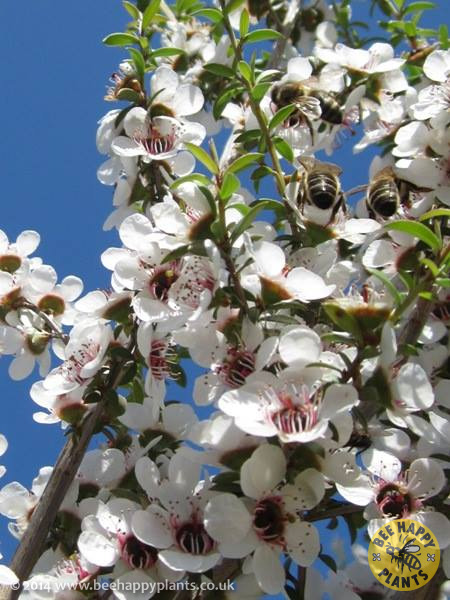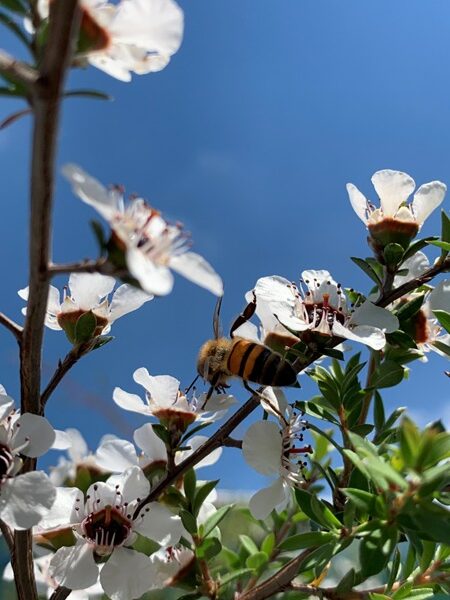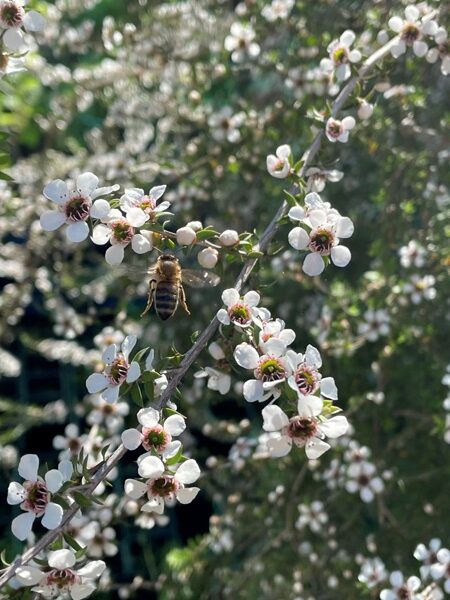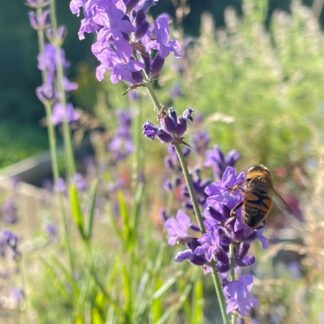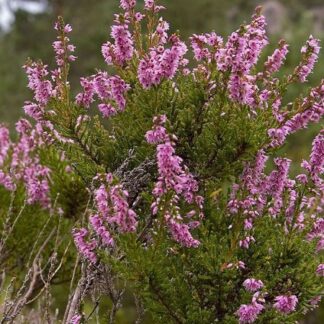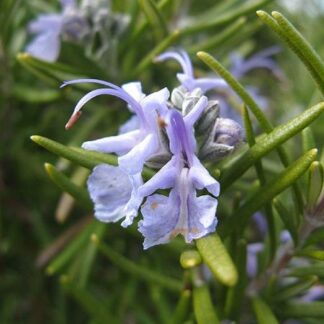Description
Myrtaceae (family name)
Forage for Pollinators: Produces Nectar and Pollen for an array of pollinators, especially attractive to Honeybees and some short-tongued bumblebees and solitary bees. This is a major honey plant, where there is a sufficiently large stand of these small trees. An absolute star bee plant, which also flowers during the June-gap dearth.
Flowering time: June, sometimes a second flush in November, December.
Growing information: EVERGREEN SHRUB/small TREE, very long-lived < 60-100 years, growing to 3-4m (10-13ft) by 3m (10ft). This species has been grown in the British Isles since the 1880's. Does not like very dry soil, does like shaded roots and full sun on the foliage, and grows happily in un-cut grassland, though will not tolerate other plants such as brambles or Goose-weed growing over it and shading its small leaves which need full sun to photosynthesise. Tolerates and thrives in coastal conditions. Hardy to minus 23ºC, approximately (the coldest ever recorded temperature, in 1903 in its native range was MINUS 25.6 degrees Celcius). Our original seed was sourced from this location in 2008 and have been grown here in our nursery since then.
In the South of UK these trees appear to grow slightly taller (up to 4.1m (13ft 6″) than they do on the NZ Alps, and will grow well in heavy clay and loamy silt and lighter soils only if there is sufficient depth for the roots to penetrate damper substrate. Tolerates very acidic to neutral pH. Can be planted as windbreak hedging, however the more protected from wind they are, the better for bees to forage on. We recommend 2.5 m spacing between trees. If clipped and trained when about 5 years old, can form excellent, dense and long-lived hedges. However, DO NOT PRUNE unless you wish the trees to remain at the height you prune them, as they do not regenerate any height once pruned, which explains why in New Zealand they are commonly used for hedging. Very young trees benefit from protection, such as wind-break netting in very exposed high ground. And tree-guards are a necessity to protect from rabbits and deer. For maximum flowering, plant in a sheltered, West or South-facing position, with roots shaded by another lower-growing shrub, to keep roots moist during establishment. Mulch after planting, and protect with fleece around base of plant during its first winter (in Northern UK colder areas). Will flower from the second or third year, and show more hardiness with maturity. A sign of cold stress in young trees is a purpling of leaves which will green up again as the season warms.
Provides one of the most effective oils found in New Zealand’s Manuka plants, producing the most potent Manuka honey, measured in mg/Kg of ‘methylglyoxal’ (MGO). This essential oil is known to be antiseptic, antibacterial, antiviral and moderately antifungal, and the honey is many times more potent in these qualities than the oil – and without a doubt conferring these benefits to the bees – as in human medicinal use.
